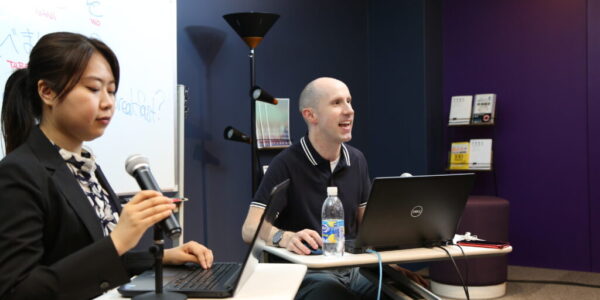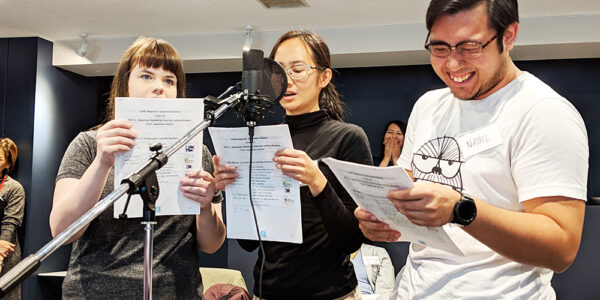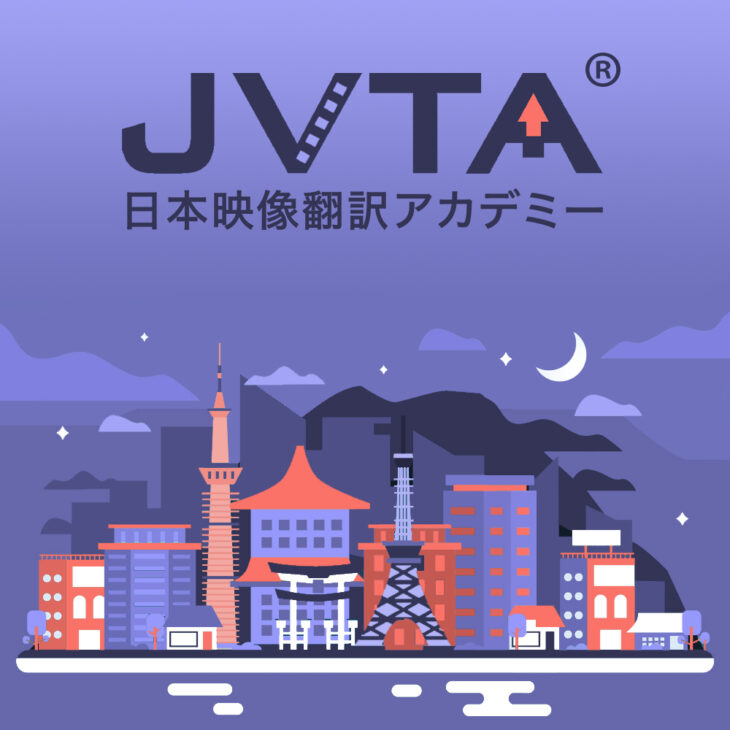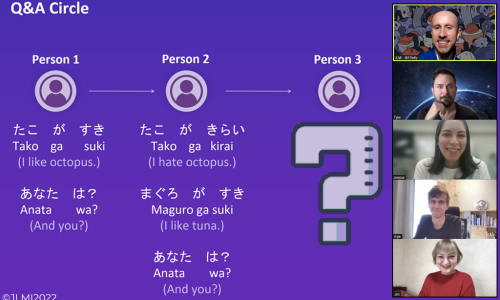About JLMI

Practice With Purpose
JLMI aims to provide practical Japanese training and cultural knowledge for students and professionals from all walks of life.
We believe that learning comes easy when students are motivated by a goal. Whether that’s improving your casual convo skills, learning how to voice an anime character or perfecting your professional correspondence, we have a course to help you.

We provide classes, workshops, lectures and interactive content concerning all aspects of using Japanese in everyday life. Our content is fresh, modern and based on current media and actual life experience in Japan.
Our goal is not for you to become a perfect, near-native speaker, but to become an able, independent and well-rounded participant in Japanese culture.
OMG Are we famous now?!
Read our feature article on Japan Today!
✉ Sign up for our weekly mail magazine! ✉
Each week, we cover 4 timely topics spread across 4 different categories to provide a wide breadth of knowledge about everything Japan. From Japanese news and culture to language pointers, from what’s going on in our courses to what people are watching at home. 登録してね!
JLMI x JVTA
JLMI is operated by Japan Visualmedia Translation Academy. For over two decades, JVTA has been at the forefront of the visual media translation industry, producing subtitles in various languages, along with closed captions and audio description for the visually and hearing-impaired. Over the years, we have expanded our areas of expertise beyond translation and now provide a variety of services with a global touch that involve video creation, language learning, PR, education, and much more.

FAQs for Inquisitive Minds 🙂
-
Courses at JLMI are not geared specifically towards helping you pass the rigorous Japanese Language Proficiency Test. The JLPT focuses heavily on being a passive communicator in Japanese; being able to read long passages, tell the difference between similar kanji characters, understand the nuances of certain phrases and passages, correctly use difficult grammar constructions, etc. Those skills are great to have but not necessarily the most helpful when it comes to actually living a productive and active life using Japanese. That’s why we have created our courses to help you get through your day socially and practically (beginner courses) and also to navigate the challenges that come with working in a Japanese environment (advanced courses).
-
Beginner courses start from the beginning (obviously) and include situational conversation practice starting from topics as simple as self-introductions to slightly complex topics like comparing your abilities to others, setting up social activities, discussing likes and dislikes, etc. Advanced courses, taught fully in Japanese, passively engage your listening and speaking skills during the class while training your reading and writing skills with different tasks, projects and homework assignments, all graded and returned by the instructors on a weekly basis. To summarize, beginner courses are very conversation-based whereas advanced courses are designed to help you really fine-tune your nuance-based skills with the written language while still including high-level in-class discussions.
-
We use Zoom to present our content and communicate during class hours. We also use our own original online educational platform, JVTA Online, for file-sharing, curricula updates, enrollment and detailed class information.
-
We currently do not offer any on-campus classes at JLMI. We have been operating fully online since 2019.
-
You are more than welcome to participate in your course with a smartphone or tablet. However, since those screens are usually significantly smaller than a traditional PC, some tasks may be more difficult to complete than usual. For example, most media includes subtitles which may be harder to read on a smaller screen. Accessing the chat feature for submitting in-class answers, checking links, sharing files, etc. may be difficult on a smartphone or tablet as well. Finally, in some classes, we use shared Google documents or spreadsheets to easily collect answers and on-the-spot translations. Jumping between Zoom and Google apps on a device other than a computer may be confusing for some students and cause them to accidentally disconnect from the Zoom meeting. We recommend taking the courses on a traditional PC or by using multiple devices simultaneously to avoid difficulties.
-
All kinds of students sign up for JLMI’s courses. We have taught current students (high school, university, grad school), people living overseas who are getting ready to move to Japan for work or study, people already living in Japan who want to improve different skills in their free time, professionals working in Japanese environments who want to get a leg up in their industry, retired people who enjoyed their time abroad and want to keep their communicative skills up and so on.
-
You are more than welcome to enroll at any time during the registration period. We maintain a registration period before each course in order to create the most conducive environment for online, interactive and productive learning. Too many students will limit individual feedback and speaking time whereas having too few students makes it feel a bit like a matchmaking session. So applying during our registration period (different for each course) will help us make sure the course’s environment is as ideal as possible.
-
JLMI does not offer any certificates upon completion of our courses.
-
Although it is possible to attend our courses without any prior knowledge of the Japanese language, we do not spend time going over the finer details of grammar, the slight changes in different verbs, etc. that many beginner students need in order to really understand the language. So we recommend that students study the basics on their own and think of JLMI as a supplementary class that will help them put into practice what they have already learned but maybe not yet completely grasped.
-
Absolutely! Our beginner courses’ content is based on clips and snippets from different anime, video games and reality TV shows, but students do not need to be well-versed at all in any of these genres in order to enjoy the course and its linguistic benefits.
-
There is no homework for the beginner courses. We focus on conversation and on-the-spot communicative ability. We can recommend exercises to keep your skills up between classes, but we do not assign homework. As for the advanced courses, there is written or preparatory homework almost every week of the course. The homework is to be submitted beforehand, checked by the instructors and then returned either prior to or after that week’s class.
-
Depending on the course and instructor’s preferences, homework is to be submitted either by e-mail, a simple upload link to our secure BOX server or via a simple upload link to our own secure platform, JVTA Online.
-
Beginner courses are taught mostly in English with some Japanese thrown in to get students used to using it casually. The conversational activities are fully in Japanese and then discussed / critiqued afterward in either English or Japanese.
-
At JLMI, we do not focus on the very detailed basics of language learning, like the syllabaries or handwriting practice. We believe that this kind of learning is best done on one’s own time at one’s own pace, while we like to spend our time together at JLMI as productively and proactively as possible with a very minimal amount of lecture-style discussion and a focus on communicative learning.
-
It is perfectly OK to miss one of the classes in the course. However, our courses are relatively short (5-6 classes total), so try not to miss too many! In order to maintain the privacy of our students and instructors, we do not share class recordings with anyone, regardless of the situation. However, for students who miss a class, we can provide you with the materials used in that class for you to review on your own before joining the next class.
-
It is perfectly OK to miss one of the classes in the course, However, our courses are relatively short (5-6 classes total) so try not to miss too many! In order to maintain the privacy of our students and instructors, we do not share class recordings with anyone, regardless of the situation. However, for students who miss a class, we can provide you with the materials used in that class for you to review on your own before joining the next class.
-
We accept payment via our educational platform, JVTA Online. We are able to accommodate credit card payments as well as Japanese bank transfers.
-
As our courses are already quite affordable (you’re welcome), we do not offer any scholarship options.
-
Unless stated differently in the details section of each individual course, we do not offer any discounts.
-
Generally, all sales are final. But please confirm your schedule carefully and contact us with any questions or concerns before making your purchase in order to limit transactional stress for everyone involved.
-
We will be happy to assign you to a different course after signing up. Additional fees may apply if the new course has a higher price than the original.
-
Depending on the class, some teachers may provide PDFs of their presentations or other supplemental materials either before or after the class.
-
Of course, each course is different but here is the gist of the beginner and advanced courses. In the beginner courses, we generally start with a quick vocabulary-based warmup to help students construct a word bank in their minds that will help them later in the lesson. We then move into the media portion of the class in which students watch or listen to a short clip and discuss what they picked up in that scene. We then take a look at the grammar / speaking point for the day that appeared in the previous clip. We practice using that point in various situations with different kinds of spoken exercises. We then go through an example conversation that uses the day’s point clearly in several ways. In breakout rooms, students then prepare their own conversations using the same point. Students return to the main room, share their conversations with the class, and receive instructor feedback and coaching. If time allows, we repeat this process with an additional grammar point from an additional clip. In the advanced classes, each lesson warms up with an open dialogue about a trending topic of the week. The instructor then goes over the homework from the previous class (if applicable) and answers any questions or concerns. After a brief lecture-style introduction of the day’s topic, students are then asked to perform different tasks on the spot like writing the best translation or discussing the nuance behind an article that is being used. The advanced courses are very free-form and discussion-based without a lot of focus on grammar so that students can ask as many questions as they need, and instructors can really dig into the material freely without wasting time on repetitive activities students at this level tend not to need.
-
In the beginner courses, we like to limit each course to a total of 10 students so that everyone gets a chance to answer, participate, converse and make as many mistakes as possible. The more mistakes, the more we learn. In our advanced courses, the total number of students will never exceed 15 since these classes are even more focused on real-time group discussion and active learning.
-
Everyone is different. Everyone is starting from a different place. Everyone has different priorities and study styles. The amount of time it takes for you to start speaking in Japanese depends solely on you and how much effort you put into making this a big focus of your everyday life.
-
JLMI is different from other Japanese language schools in that we do not focus on passing tests. We focus on living our lives. Although it might be nice to be able to write the kanji character for “tombstone”, that’s not going to help you communicate with co-workers or pay your gas bill. Thanks to our instructors’ experience living abroad, we know that speaking a language perfectly like a native isn’t the solution to success. So, we gear our lessons towards helping students achieve clear communication and problem-solving skills. On top of this objective, we also do not use traditional textbooks that are commonly utilized in other schools. Since our instructors are professionals in the visualmedia translation industry, we base all of our material on actual media that we have worked on ourselves. Content from streaming platforms as well as social media, editorials published by our own instructors and Amazon reviews written by native Japanese speakers are some of the realistic and practical things that make up our curricula.
-
JLMI does not currently sponsor visas for students.
-
JLMI cannot help you acquire employment after our classes have ended. However, our parent company, JVTA, certainly can. JVTA is a training academy for people who want to become professional visualmedia translators; people who translate subtitles for movies and TV shows, people who translate manga, and people who create closed captions for the hard of hearing. If this kind of work interests you, we highly recommend you check out JVTA’s well-rounded and professionally-minded courses. Once you complete those courses, JVTA graduates who pass the final translation exam are then given freelance translation jobs through our Media Translation Center.
-
Our instructors are all professionals currently working in the visualmedia translation industry. Our beginner classes are conducted bilingually in pairs, including one native English speaker and one native Japanese speaker. Our advanced classes are taught in Japanese by native Japanese speakers with years of experience teaching and lecturing Japanese natives on how to improve their communicative skills.
-
Our beginner courses are perfect for Japanese language students who are interested in real-time practice and putting their knowledge to use. We focus on conversational skills using basic to mid-level grammatical structures. The level of our content is comparable to the material you would normally find on the Japanese Language Proficiency Test for levels N5 and N4. Our beginner classes are probably not the best fit for someone who is starting to study Japanese without any prior knowledge or study at all. We do not waste class time explaining grammar in detail or memorizing characters and how they should be pronounced. There are so many different classes and textbooks that can be utilized to do that kind of work at your own pace. At JLMI, we want to give you opportunities to put into practice what you have already learned and see how other more colloquial phrases can help you express yourself and communicate more quickly and succinctly in different situations. After all, just because it appears in a textbook doesn’t mean that you will actually hear it on the street.
-
Our advanced classes are conducted fully in Japanese. Therefore, students will feel most comfortable in the class if they are able to read, write, speak and listen in Japanese to a relatively high extent. The content used in our classes can be most closely compared to what you may find on the Japanese Language Proficiency Test Levels N2 – N1. If you have previously studied for these levels, our advanced courses will serve as a great place to train and improve your skills as well as take your studies a little bit deeper in terms of context and intended meaning.
-
In our beginner courses, we focus mainly on conversational Japanese which is used between friends, family and new acquaintances in relaxed settings. Although we do provide more formal options in our materials in some lessons, we do not spend much time on how/when/where/why to use these more formal options because they do not normally come into play much at this level of study. In our advanced classes, the materials we work with include all different styles of Japanese, from formally written book reviews to casual online shopping reviews. So although we do include different styles in our materials, we do not focus on the mechanics or details of the grammar.
-
Our beginner courses are taught bilingually, mostly in English regarding explanation and clarity but also in Japanese when it comes to creating example sentences, student praise and shorter, simpler explanations. All materials displayed to the students are always written in traditional Japanese, hiragana only, and also Romaji, so no matter where you are when it comes to text, you can still participate in the class. Our advanced courses are taught solely in Japanese.
-
Absolutely not. We believe that information can be obtained and shared equally between native speakers and non-native speakers alike. However, all of our non-native speaking instructors have lived and worked in Japan for a minimum of at least 10 years each in a multitude of industries, so their language experience and exposure make them more than fit to share their knowledge.
